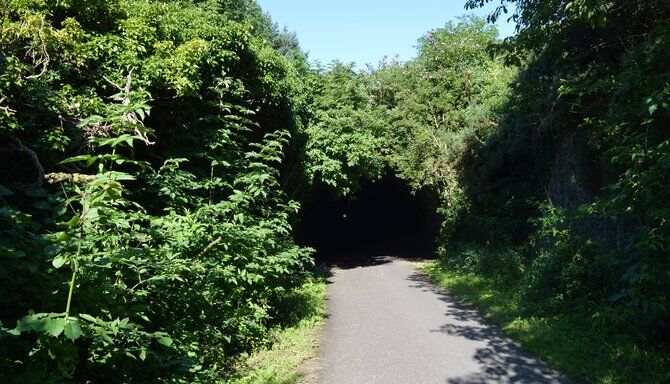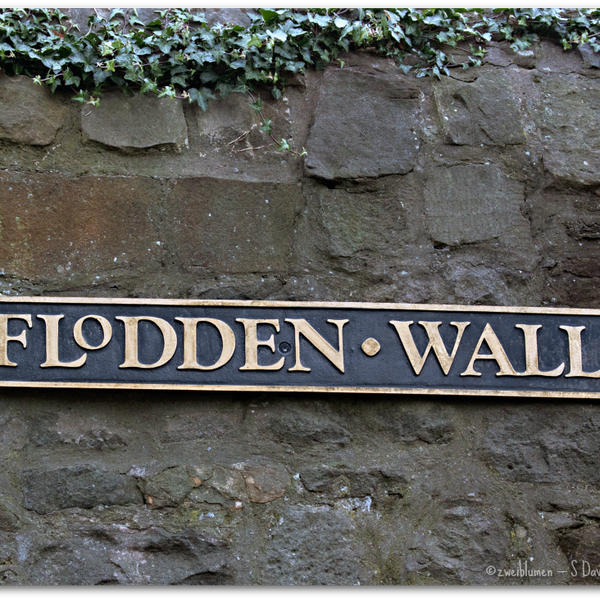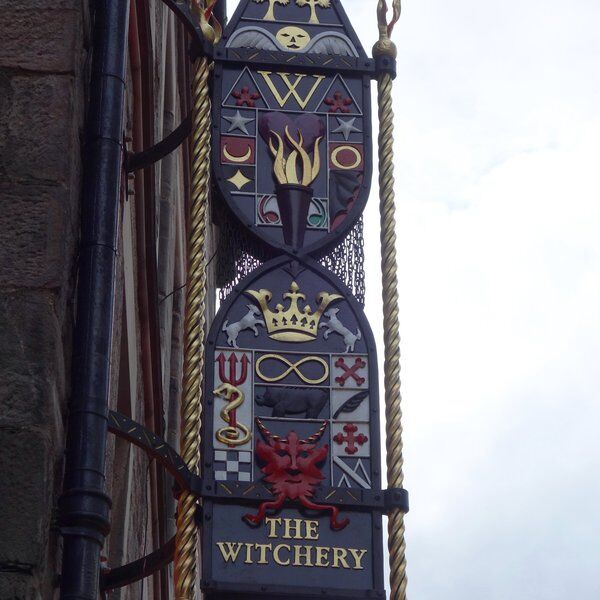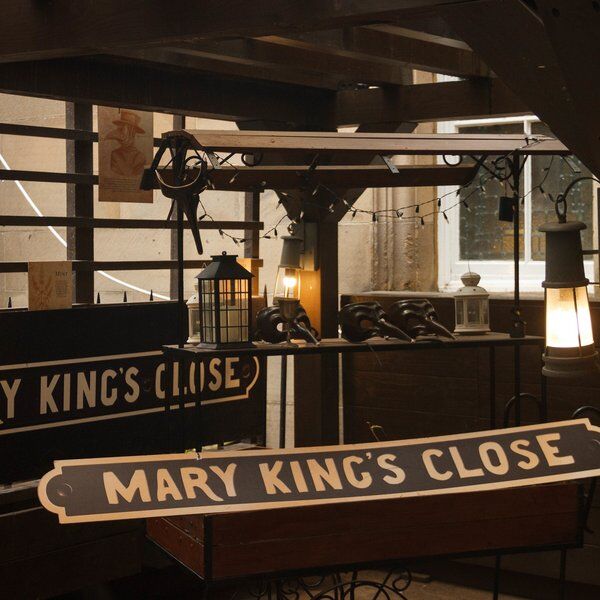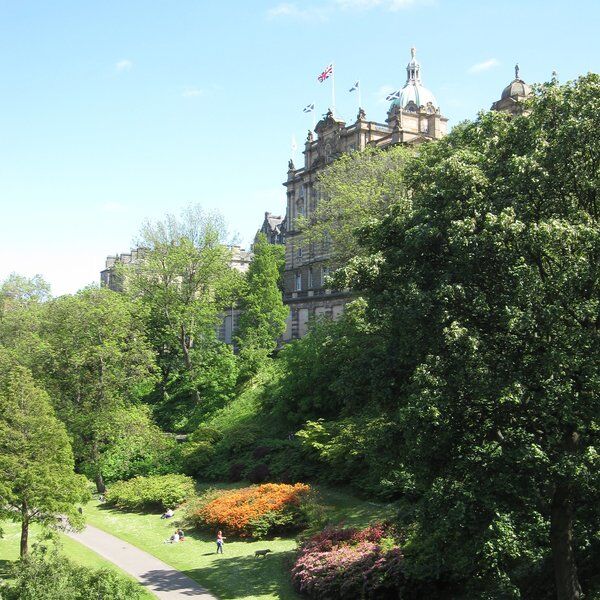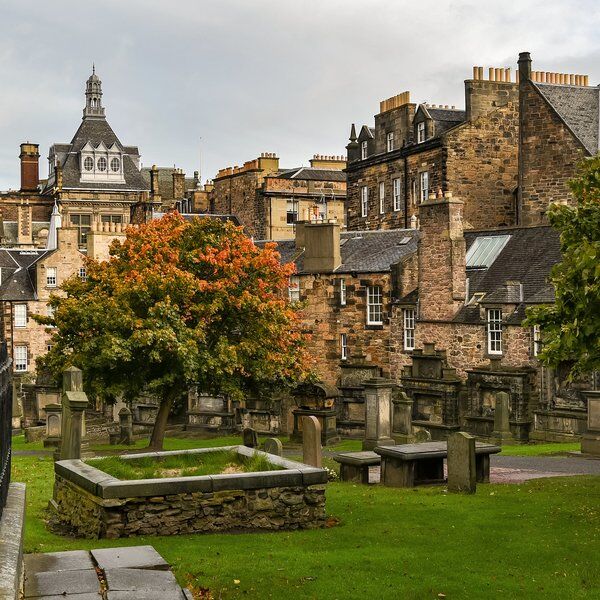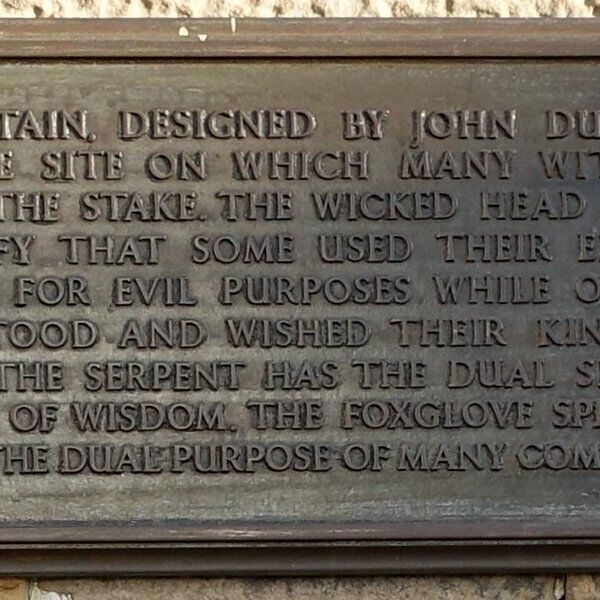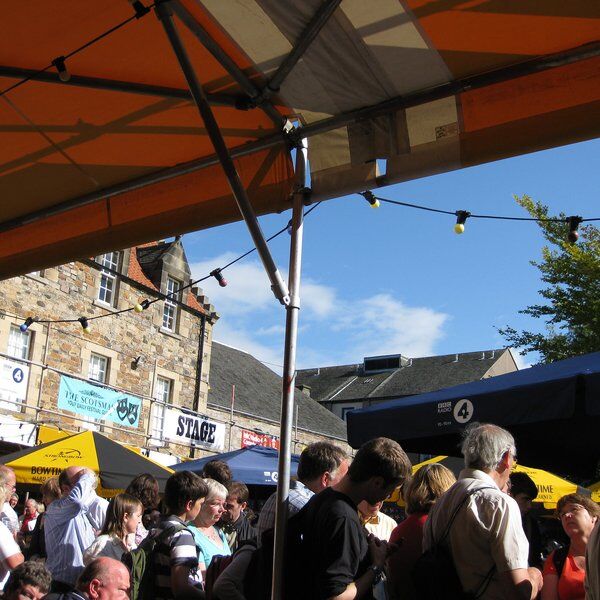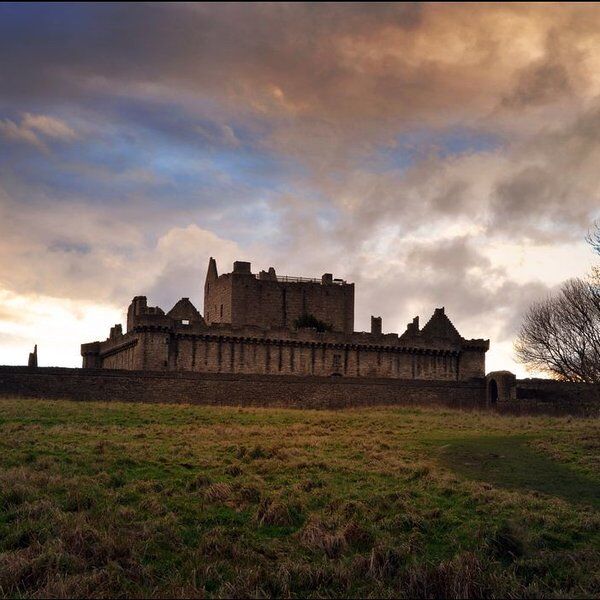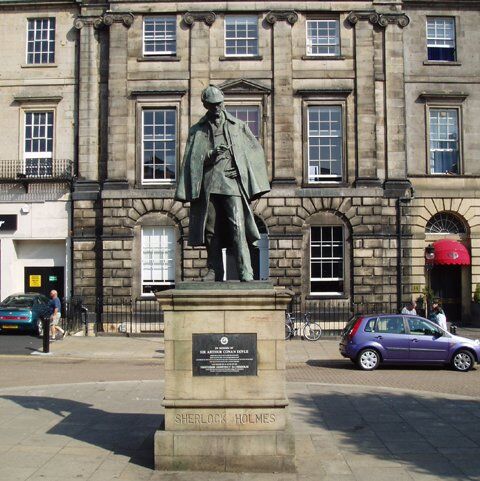Discovering Edinburgh’s Innocent Railway Tunnel
“By the Innocent Railway you never feel in the least jeopardy; your journey is one of incident and adventure; you can examine the crops as you go along; you have time to hear the news from your companions; and the by-play of the officials is a source of never-failing amusement.”
If you’ve ever wandered the winding streets of Edinburgh and thought you’d seen all there is to see, think again. Beneath the shadow of Arthur’s Seat, tucked away behind modern flats and footpaths, lies one of the city’s best-kept secrets—the Innocent Railway Tunnel.
Despite its rather saintly name, this dark and moody tunnel looks more suited to a horror film than a children’s bedtime story. But don’t be fooled by its eerie appearance—this former coal route is a fascinating piece of Scottish history, and today, it's a beloved walking and cycling path packed with charm and character.
Tunnel Specs at a Glance
- Length: 566 yards (517 m)
- Dimensions: 15 ft (H) × 20 ft (W)
- Construction: Craigleith sandstone lining
- Gradient: 1-in-30 incline (rope-hauled by stationary steam engine)
- Built by: Engineer James Jardine (1776–1858)
- Cost: £12,000 in 1831 (equivalent to several million pounds today)
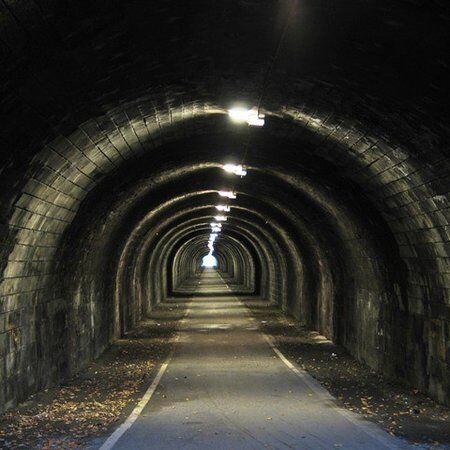
Wait, What Is the Innocent Railway Tunnel?
The story of the Innocent Railway Tunnel is inseparable from the rise (and fall) of the Edinburgh and Dalkeith Railway—Edinburgh’s very first rail line. Let’s unpack how a humble horse-drawn coal tramway became home to Scotland’s earliest public railway tunnel.
The Tunnel's Origin Story
In the early 1800s, Edinburgh was burning through an enormous amount of coal—nearly 350,000 tons a year—to fuel its homes, breweries, and workshops. Yet much of this coal was being imported by canal and sea, making it expensive and unreliable during winter months.
To solve the problem, a powerful group of Midlothian landowners—known as the Coal Lords (including the Earl of Rosebery and the Duke of Buccleuch)—hatched a bold idea: build a railway to haul coal directly from their Dalkeith pits into the city. In 1826, they secured parliamentary approval for the Edinburgh & Dalkeith Railway: a horse-drawn tramway that would slash coal costs by as much as 40%.
Building the Tunnel (1827–1831)
The project’s chief engineer, James Jardine, broke ground in 1827. His plan called for:
- Gauge: 4 ft 6 in (standard for Scottish mineral lines)
- Route: Dalkeith to St Leonards, just south of Arthur’s Seat
- Tunnel: A 566-yard bore running under the city’s volcanic slopes, climbing on a steep 1-in-30 gradient
Construction was no small feat. Tragedy struck in 1829 when a masonry collapse killed one worker and injured eight others. But by July 1831, the tunnel was complete. A stationary steam engine at the St Leonards end used a rope-haul system to pull loaded coal wagons uphill, while horses took over on the flatter sections.
This tunnel—later dubbed the Innocent Railway Tunnel—was Scotland’s first public railway tunnel and a remarkable engineering achievement for its time.
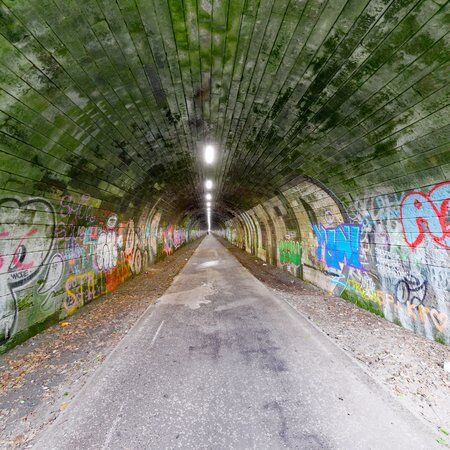
Unexpected Passengers: A Railway for People (1832–1836)
Though the line was intended solely for coal, it quickly became a hit with people too. In 1832, entrepreneur Michael Fox introduced a horse-drawn passenger service with:
- Fares: 6d for open-air seats, 9d for shelter
- Ridership: Over 150,000 passengers in its first year—more than the Liverpool & Manchester Railway at the time
The public loved it, and by 1836, the Edinburgh & Dalkeith Railway took over passenger operations, introducing scheduled services and better-protected carriages.
So... Why is it Called the Innocent Railway Tunnel?
In the 1840s, as steam locomotives were becoming the roaring, speeding norm, the horse-drawn Edinburgh and Dalkeith Railway seemed, well… adorably outdated. Slow. Gentle. Almost comically un-modern.
In 1846, a writer in Chambers’ Edinburgh Journal dubbed it the Innocent Railway to playfully mock the line’s leisurely, horse-drawn pace, especially when compared to the “whizzing, whistling” steam locomotives taking over the country.
In other words, it wasn’t called “innocent” because it was safe—it was called innocent because it was quaint. A relic of a slower, simpler time that chugged along while the rest of the world rushed ahead.
And the nickname stuck.
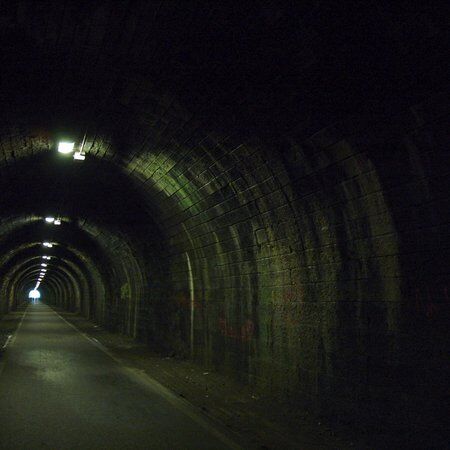
The Age of Steam: Modernization by North British Railway (1845–1847)
So as we have established—by the 1840s, steam locomotives were revolutionizing transport, and the quaint, horse-drawn Innocent Railway began to feel... well, innocent.
In 1845, the North British Railway purchased the line for £113,000. Major upgrades followed:
- Track gauge widened to 4 ft 8½ in (standard gauge)
- Stronger rails laid to support locomotives
- The rope-haul system retired, replaced by steam-powered trains running through the tunnel
By 1847, locomotives were thundering through the tunnel under their own power, linking Edinburgh to the growing Waverley Route, which stretched as far south as Carlisle.
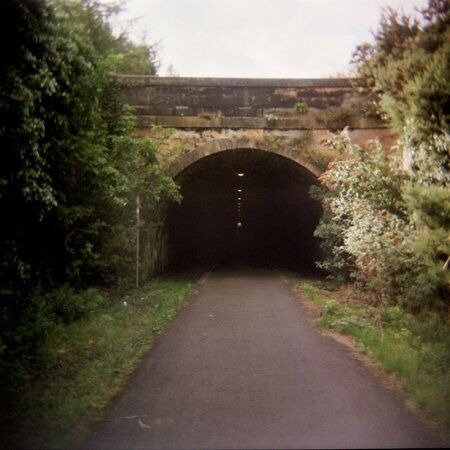
Decline and Closure (20th Century)
As coal demand declined and new routes opened, traffic on the old line dwindled. The St Leonards goods yard, once bustling with industry, finally closed in 1968, marking the end of the railway’s commercial use. For more than a decade, the tunnel fell silent, used only by the occasional trespassing pedestrian or curious explorer.
A Second Chance for the Innocent Railway Tunnel
The tunnel was unofficially reopened to walkers in 1981 and fully restored in 1994, when Lothian Regional Council surfaced and illuminated the passage. It was incorporated into National Cycle Route 1, a network that spans the UK from Dover to the Shetland Islands.
Today, the 517-metre tunnel is a car-free corridor winding beneath Edinburgh’s southern flank—open to walkers, cyclists, and runners. It's one of the city’s best-kept secrets, offering a surreal, echoing experience that blends history with green travel.

Visiting the Innocent Railway Tunnel
Getting There
- Start Point: Begin at the Maltings housing development on Holyrood Park Road, just south of the University of Edinburgh’s Pollock Halls.
- Access Tip: Look for a discreet cycle-route sign behind modern flats—this marks the tunnel entrance. Follow the signed path from Hermit’s Croft, curving into Terrars Croft.
- Nearby Facilities: There are no services in the tunnel itself. The nearest cafés and toilets can be found at Duddingston Village or the Holyrood Park Visitor Centre.
Finding the Hidden Entrance
The tunnel entrance is easy to miss—tucked quietly behind flats on Parkside Street, near St Leonard’s Police Station (famous from the Rebus novels). Once you follow the path through Hermit’s Croft and Terrars Croft, you’ll arrive at the unassuming but intriguing entrance to the Innocent Railway Tunnel.
About the Tunnel
Running beneath Pollock Halls and emerging near Samson’s Ribs in Holyrood Park, the Innocent Railway Tunnel is part of National Cycle Route 1, which stretches from Dover to the Shetlands. Despite its eerie, Gothic look, the tunnel is well-lit and offers a safe, weatherproof route for walkers and cyclists.
The Route: 517 Meters Underground
The tunnel runs 517 meters (1,696 ft) beneath Edinburgh’s south side. It rises gently at a 1:30 gradient—noticeable for cyclists—before sloping down toward Holyrood Park. On the other side, you’re greeted by greenery, with paths leading into Bawsinch Nature Reserve and Duddingston.
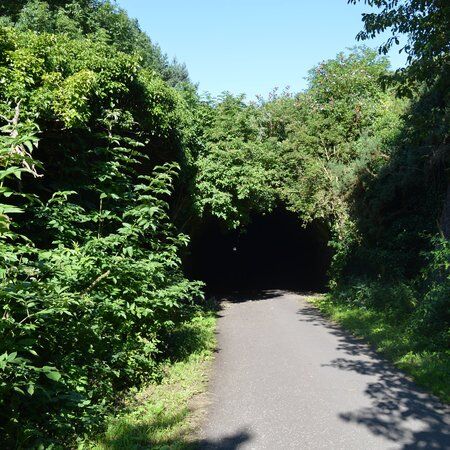
Best Ways to Explore
- Walkers & Runners: Plan for a 1 km round trip. Take 20–30 minutes to stroll, enjoy the tunnel’s atmosphere, and check out its graffiti and acoustics.
- Cyclists: Going east? It’s a smooth downhill ride. Heading west? Prepare for a steady uphill climb. This stretch is part of the larger National Cycle Route 1, so it connects easily to wider cycling adventures.
Practical Tips
- Best Time to Visit: Weekday mornings or late afternoons—weekends get busy with locals on bikes and pups on leads.
- Lighting & Safety: The tunnel is well-lit, but noises echo, and some spots feel spooky after dusk. Keep your phone at the ready and ride or walk in pairs if you’re uneasy.
- Watch for Rockfall: In 2021 part of the tunnel approach was closed due to cliff instability. Always heed any warning signs or temporary barriers.
What to Pack
- A rechargeable torch (just in case a light flickers out)
- Comfy shoes or a well-padded saddle
- Water and a snack—there’s nowhere to buy provisions underground!
- A camera: the tunnel’s graffiti gallery and the woodland beyond are seriously cool.
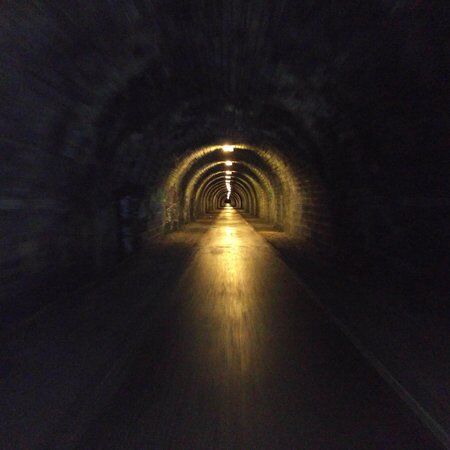
Explore Beyond the Innocent Railway Tunnel with CityDays
Ready to swap solitary tunnels for team adventures? CityDays throws down the gauntlet with interactive scavenger hunts and treasure trails across Edinburgh.
Rally your crew, decode clues in historic alleys, and turn urban exploration into the ultimate team-building bash. Unforgettable memories guaranteed—no horses or steam engines required!
Our routes will take you beyond the obvious—from cobbled wynds to secret courtyards, with plenty of trivia and laughs along the way.
Oh, and we don’t stop at Edinburgh. Our adventures stretch out across cities around the globe, so wherever you are, we’ve got a trail with your name on it.
Ready to play? Ready to explore? Let’s go!
